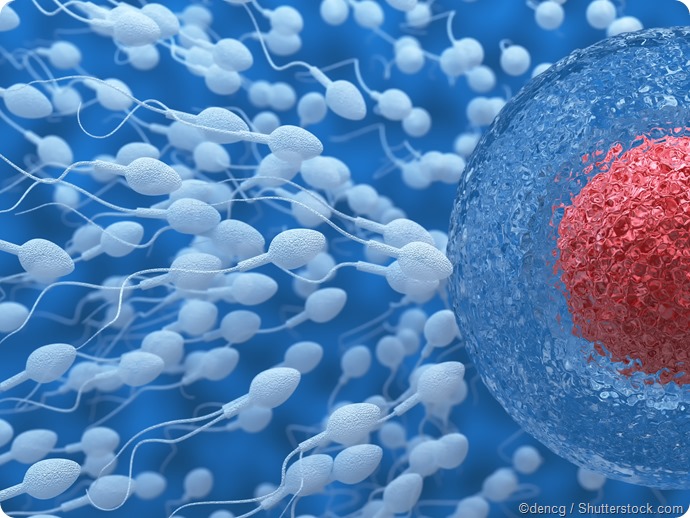Assisted reproductive techniques (ART) took a quantum leap in 1978 with the birth of the first ‘test-tube baby,’ Louise Brown, who was conceived through in vitro fertilization (IVF), crowning decades of work on fertility and its barriers. Research since then has led to greater ease of micromanipulation of both oocyte and zygote, making it possible to offer solutions to irreversible male infertility as well.
3D Animation of how ICSI works
Indications
Earlier workers attempted to overcome obstacles to fertilization through natural means by techniques such as subzonal sperm insemination, and partial zona dissection. The most recent improvement in technique is intracytoplasmic sperm injection (ICSI). These procedures are unique because they require only one sperm to be injected into the oocyte or the surrounding perivitelline space for fertilization. This is in contrast to IVF, which can be successful only if sufficient numbers of sperm cells are available with good motility to successfully fertilize the ovum.

ICSI is indicated in men who:
- Have severe oligospermia or azoospermia
- Have asthenospermia or teratospermia
- Have a history of failed fertilization during previous cycles with IVF
- Have sperm aspirated from the testes or epididymis (MESA or TESE)
- Have frozen sperm which is below top quality
- Want to use preimplantation genetic diagnosis (PGD)
Advantages
ICSI does not require large numbers of sperm cells or good sperm quality to achieve fertilization of an oocyte. For this reason, ICSI is useful in providing a way for men with severe infertility caused by lack of sperm production or obstruction to father a biological child genetically related to them. That is to say both obstructive and non-obstructive azoospermia may be treated successfully by ICSI.
Different types of sperm samples may be used to perform ICSI, including:
- fresh semen
- cryopreserved semen
- microsurgically retrieved epididymal sperm (MESA)
- microsurgically extracted testicular sperm (TESE) when the vasa are absent or blocked
- percutaneously aspirated sperm (PESA)
The fertilization, pregnancy, and live birth rates are comparable with sperm from all these sources.
Limitations
Some types of male infertility are not treatable by this technique, such as:
- Y chromosome microdeletions (YCMD) - these are common in primary testicular or incomplete testicular failure, are detected in 5-10 percent of men with severe oligospermia. Many of these make testicular sperm retrieval impossible, but others may be bypassed with ICSI.
- 46,XX karyotype - this is a rare translocation found in azoospermia, with absence of most of the Y chromosome rendering sperm production impossible.
- X-chromosome linked mutations such as androgen receptor Xq11.2-12 mutation may result in androgen insensitivity and azoospermia
Outcomes
Numerous studies show no significant difference between children born by ICSI and by routine IVF techniques or natural conception, with regards to neurological, social and physical development for up to ten years. However, other workers allege that the incidence of chromosomal anomalies, imprinting disorders, and congenital malformations is higher in children born after ICSI.
Even if the difference in risk is due to the underlying condition causing infertility, and the general background risks, it is important to note that this risk would not have been inherited if ICSI had not been implemented.
Small increases in the risk of malformation may not be detectable by the number of patients studied so far, and long-term results have not yet become available. For this reason ICSI must be treated very much as a reserve technique, to be used when no other treatment is likely to succeed, and with the provision for performing PGD if the parents have transmissible genetic disorders. PGD itself is liable to many ethical questions which are not likely to increase its popularity in a conservative society. Long term studies are crucial to unveiling the true nature of this intervention, as far as reproductive and general health are concerned.
Safety
Evidence suggests that up to a quarter of men with severe oligospermia or azoospermia are suffering from chromosomal anomalies, YMCD, or CFTR mutations. Many other disorders may be more prevalent in children born by ICSI. This puts the spotlight on the fact that bypassing natural barriers to insemination does not automatically mean complete success, but long term health hazards, and especially the transmission of factors which increase the incidence of male infertility, may be inadvertently passed down generations. The long term risks of this approach are yet to be studied. PGD is often offered as a viable option to prevent the implantation of genetically abnormal embryos, but its effectiveness in this role is yet to be established.
Implications
The implications of bypassing natural barriers to conception posed by male infertility in cases where this is due to genetic abnormalities are profound. Many of these defects are trasmitted to the offspring, and this has given rise to the concept of preimplantation genetic diagnosis (PGD).
Again, in many subfertile men, genetic imprinting is responsible, and such conditions may be passed on to the offspring. It is known that up to one in ten men with azoospermia or severe oligozoospermia (the sperm count is less than 5 million/ml semen) have genetic abnormalities. These may result in structural or functional testicular abnormalities. Only 20-30 percent of men with azoospermia or severe oligospermia are finally diagnosed to have a specific disorder, while the vast majority of gene abnormalities leading to male infertility remain unknown as of date.
References
Further Reading